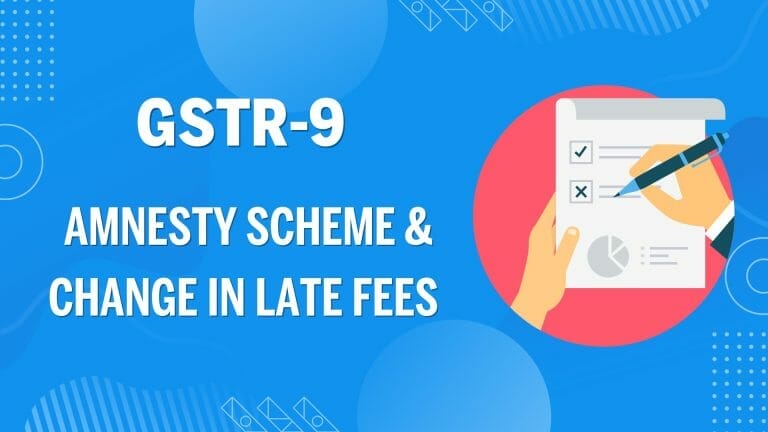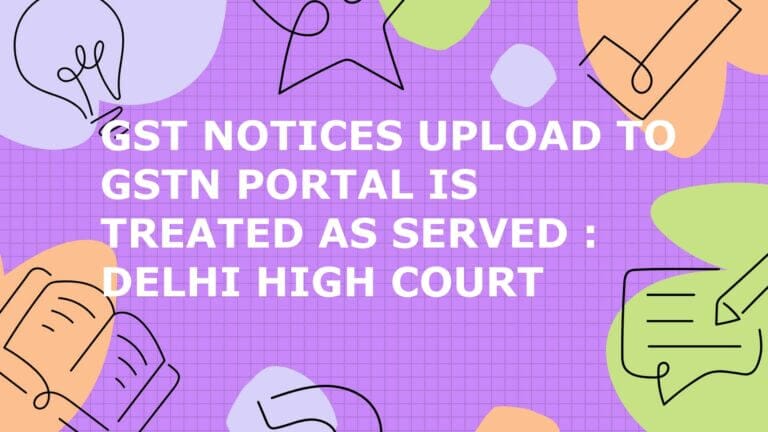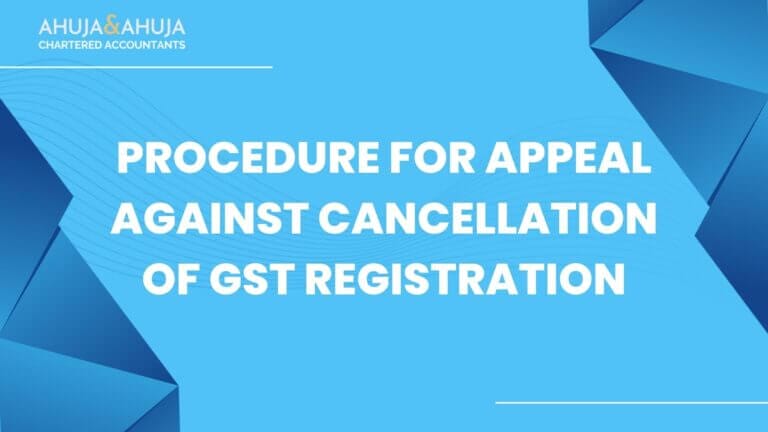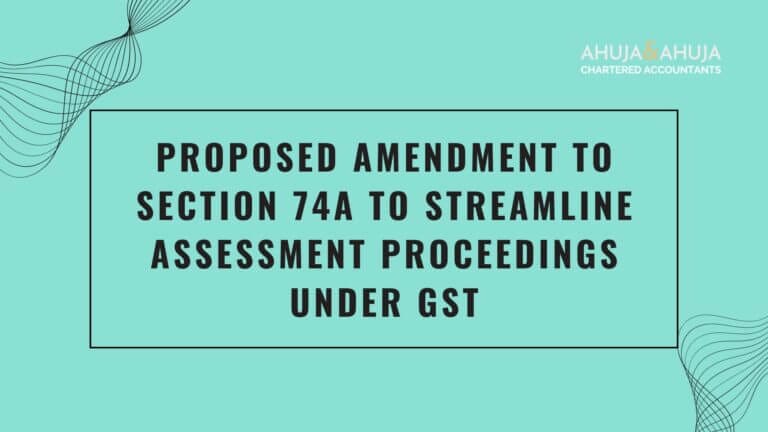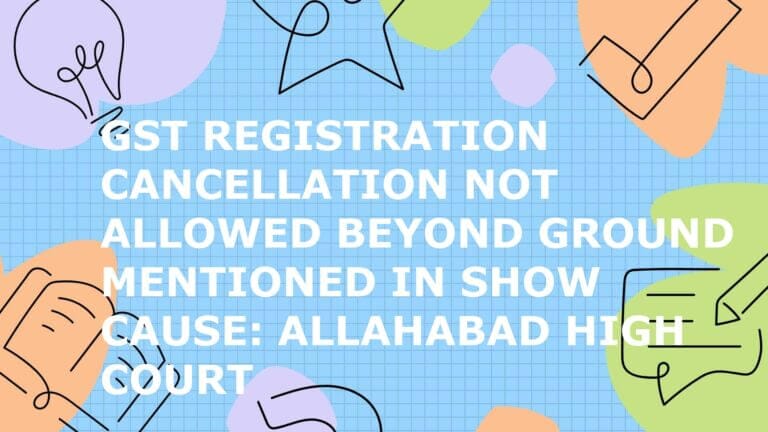E-Way Bill 2.0: Key Changes in GST E-Way Bill System and What Businesses Must Know
I. Executive Summary & Introduction
A. Brief Context: Evolution of India’s E-Way Bill System
Since its rollout in 2018, the E-Way Bill system has been the backbone of India’s GST logistics compliance. It ensures that the movement of goods above a certain value is tracked, documented, and compliant with GST law. Over the years, the system has helped curb tax evasion, streamline interstate transport, and bring much-needed transparency to supply chains. However, as India’s logistics sector has grown more digital and dynamic, the need for a more resilient, flexible, and user-friendly system has become clear.
B. Why Now? – Rationale for E-Way Bill 2.0 (Effective July 1, 2025)
The GST Network (GSTN), in partnership with NIC, is launching E-Way Bill 2.0 on 1st July 2025. This upgrade is not just a technical refresh—it’s a strategic response to industry feedback and operational realities:
- Business Continuity: Technical downtimes on the single existing portal have, in the past, led to delays and compliance headaches.
- Seamless Operations: With India’s supply chains running 24×7, even a short disruption can mean lakhs in losses or compliance risk.
- User Demand: Businesses, accountants, and transporters have asked for a system that is always available, always in sync, and easy to use.
E-Way Bill 2.0 introduces a dual-portal architecture with real-time data synchronisation, cross-portal operability, and enhanced functionalities—making GST compliance more robust and future-ready.
C. Article Roadmap: What This Guide Will Cover
This guide is your one-stop resource for understanding and adapting to E-Way Bill 2.0. Here’s what you’ll learn:
- How the new dual-portal system works and why it matters for your business
- Real-time data sync: What it means, how it works, and how to keep your records consistent
- Business continuity: Stepwise actions to take during technical downtimes
- New features and compliance upgrades: What’s improved, what’s changed, and how to leverage them
- Actionable checklists and best practices for accountants, logistics teams, and ERP integrators
- Common pitfalls and how to avoid them
- Training, documentation, and audit-readiness tips for a smooth transition
Whether you’re a CFO, GST practitioner, logistics manager, or business owner, this article will help you turn regulatory change into a compliance advantage.
II. Dual-Portal Architecture: The Backbone of E-Way Bill 2.0
A. Overview of the Two Portals
1. E-Way Bill 1.0
- The original portal (https://ewaybillgst.gov.in) has been the single point for all E-Way Bill operations since 2018.
- It handles generation, updating, and validation of E-Way Bills for goods movement across India.
2. E-Way Bill 2.0 (Launching July 1, 2025)
- The new portal (https://ewaybill2.gst.gov.in) is designed as a fully interoperable backup and enhancement to the original.
- It offers all core functionalities—plus new features and a modern interface.
- Both portals will run in parallel, with data mirrored in real time.
B. “One Nation, Two Portals – Yet Seamless Compliance”: Key Concept Explained
Think of E-Way Bill 2.0 as a twin engine for India’s GST compliance. If one portal faces technical issues, the other takes over instantly—no disruption, no compliance risk, no delay in goods movement. Both portals “talk” to each other, so any update on one is reflected on the other within seconds.
Key Takeaway:
You can generate, update, or extend an E-Way Bill on either portal, and the slip is valid everywhere. This dual-portal system is a game-changer for business continuity and operational flexibility.
III. Real-Time Data Synchronisation: Mechanism & Practical Steps
A. How Synchronisation Works in Real-Time
With E-Way Bill 2.0, India’s GSTN has introduced a real-time data mirroring system between the two portals. Here’s how it works in practice:
- Every action you take—generate, update, extend, or print an E-Way Bill—on either portal is instantly reflected on the other.
- The synchronisation happens within seconds (not hours or days), thanks to a robust backend integration by NIC.
- This means there’s no risk of duplicate, missing, or outdated records—your compliance status is always up to date, no matter which portal you use.
Example:
If you generate an E-Way Bill on Portal 1.0 and later update the vehicle number on Portal 2.0, both portals will show the latest details. The E-Way Bill slip from either portal is equally valid for transport and inspection.
B. Assurance of Data Mirroring: Timelines and Technical Details
- Data sync is near-instantaneous—typically within 2–10 seconds.
- Both portals use a shared central database managed by GSTN, ensuring that all E-Way Bill records are consistent and retrievable from either site.
- APIs (Application Programming Interfaces) are also synchronised, so ERP and logistics software pulling data from either portal will always get the latest information.
Key Point:
There’s no need to “wait” or “refresh” for updates to appear on the other portal. The system is designed for continuous, automatic mirroring.
C. Actionable Guidance: Keeping Records Consistent Across Both Portals
1. Maintaining Consistent Records
a. Systematic Data Checks
- Regularly download E-Way Bill registers from both portals and compare them.
- Use the “E-Way Bill List” or “Consolidated Report” features to cross-verify entries.
- Schedule a weekly or daily reconciliation (depending on your transaction volume).
b. IT Controls for Reconciliation
- If you use ERP or logistics software, ensure it is integrated with both portals’ APIs.
- Set up automated alerts for any mismatches or failed synchronisations.
- Maintain a log of all E-Way Bill actions (generation, update, extension) for audit purposes.
2. Sample Internal SOP Flow
Here’s a simple Standard Operating Procedure (SOP) for businesses and accountants:
| Step | Action | Responsible | Frequency |
| 1 | Generate/Update E-Way Bill on either portal | Logistics/Accounts | As needed |
| 2 | Download E-Way Bill register from both portals | Accounts | Daily/Weekly |
| 3 | Reconcile entries for consistency | Accounts/IT | Weekly |
| 4 | Investigate and resolve any discrepancies | Accounts/IT | Immediately |
| 5 | Archive reconciled registers for audit | Accounts | Monthly |
Pro Tip:
If you spot a mismatch, immediately check the sync status and contact the GST Helpdesk if the issue persists beyond a few minutes.
IV. Business Continuity During Technical Downtime: Seamless Switching
A. Identifying Downtime and Immediate Response
How do you know if a portal is down?
- You may see error messages, slow loading, or official downtime notifications.
- GSTN often updates the status on the portal homepage or via email/SMS alerts.
Immediate Response:
- Don’t panic! Simply switch to the alternate portal (e.g., if 1.0 is down, use 2.0).
- All your E-Way Bill data is already available and up to date on the other portal.
B. Step-by-Step Switch: Keeping Goods Moving
1. Updating/Generating E-Way Bills on Alternate Portal
- Log in to the alternate portal using your existing GST credentials.
- Generate, update, or extend E-Way Bills as usual.
- Download and print the E-Way Bill slip from the alternate portal.
2. Legal Validity & Acceptability
- E-Way Bill slips from either portal are legally valid for transport and inspection.
- GST officers have been instructed to accept slips from both portals during checks.
C. Practical Case Scenario: Goods in Transit During Main Portal Outage
Scenario:
A truck carrying goods is stopped for inspection. The E-Way Bill was generated on Portal 1.0, but you need to update the vehicle number—and Portal 1.0 is down.
Solution:
- Log in to Portal 2.0, update the vehicle number, and download the updated slip.
- Present the updated slip (from Portal 2.0) to the officer.
- The officer can verify the E-Way Bill details on either portal.
Key Takeaway:
No more delays or penalties due to portal downtime.The dual-portal system ensures your compliance and goods movement are never interrupted.
V. New & Enhanced Functionalities in E-Way Bill 2.0 vs. Previous System
A. Inter-Operable Functionalities: What’s New and Improved?
E-Way Bill 2.0 isn’t just a backup—it’s a major upgrade. Here’s what you can now do, often with greater ease and flexibility:
- Generate E-Way Bill from Part-A:
Start the process with just the essential details, then update Part-B (vehicle/transporter info) later—on either portal. - Generate Consolidated E-Way Bills:
Combine multiple E-Way Bills for a single vehicle, even if the originals were created on different portals. - Extend Validity:
If your goods are delayed, extend the E-Way Bill’s validity from either portal—no more scrambling if one site is down. - Update/Change Transporter Details:
Assign or change the transporter seamlessly, regardless of where the original E-Way Bill was generated. - Vehicle Detail Updates, Bill Printing, and Retrievals:
Update vehicle numbers, print, or retrieve any E-Way Bill from either portal, at any time.
Key Upgrade:
All these actions are now cross-portal—meaning you can start on one portal and finish on the other, with full legal validity.
B. Day-to-Day Compliance: Workflow Improvements
- No More Downtime Disruption:
If one portal is slow or under maintenance, just switch to the other and continue your work. - Faster Operations:
Real-time sync means less waiting, fewer errors, and smoother logistics. - Reduced Compliance Risk:
With mirrored data and dual access, the risk of missed updates or invalid slips is almost zero.
C. Table: Functions Old vs. New (Highlighting Upgrades)
| Functionality | E-Way Bill 1.0 Only | E-Way Bill 2.0 (New) | Cross-Portal (1.0 ? 2.0) |
| Generate E-Way Bill (Part-A/B) | ?? | ?? | ?? |
| Generate Consolidated E-Way Bill | ?? | ?? | ?? |
| Extend Validity | ?? | ?? | ?? |
| Update Transporter Details | ?? | ?? | ?? |
| Update Vehicle Details | ?? | ?? | ?? |
| Print/Retrieve E-Way Bill | ?? | ?? | ?? |
| API Integration | ?? | ?? (Enhanced) | ?? |
| Real-Time Data Sync | ? | ?? | ?? |
| Seamless Downtime Switching | ? | ?? | ?? |
Key Takeaway:
Every major function is now available on both portals, with real-time sync and cross-portal flexibility.
VI. API Integration: What ERP & Logistics Software Integrators Must Do
A. Availability & Testing of API Services (Sandbox Environment)
- APIs for all major functions (generation, update, extension, retrieval) are now available for both portals.
- A sandbox environment is live for testing—integrators should start using it immediately to ensure their systems are ready.
B. Project Plan for Smooth Integration
- Security Considerations:
- Ensure secure API keys and encrypted data transfer.
- Update user access controls for both portals.
- Data Sync and Consistency Checks:
- Test that your ERP or logistics software pulls/pushes data correctly from both portals.
- Set up automated alerts for sync failures or mismatches.
- User Acceptance Testing (UAT) Checklist:
- Simulate all key workflows: generation, update, extension, and retrieval.
- Test cross-portal actions (e.g., generate on 1.0, update on 2.0).
- Validate that E-Way Bill slips from both portals are accepted in your workflow.
C. Timeline for Getting Ready by July 1, 2025
- Now: Begin sandbox testing and update documentation.
- By May 2025: Complete integration and internal UAT.
- June 2025: Train users, run live pilots, and resolve any issues.
- July 1, 2025: Go live with full dual-portal support.
Pro Tip:
Don’t wait till the last minute—start testing APIs and training users now to avoid compliance hiccups.
VII. Process & Documentation Requirements for Generating, Updating, Carrying E-Way Bills
A. Unchanged & Updated Protocols in Cross-Portal Operations
- Core process remains the same:
- Generate, update, and carry E-Way Bills as before.
- What’s new:
- You can perform any action on either portal, and the slip from either is valid.
B. Carrying and Presenting E-Way Bill Slips from Either Portal
- Print or download the E-Way Bill slip from whichever portal you used last.
- Both versions are legally valid—GST officers have been instructed to accept slips from either portal.
C. Practical Checklist for Documentation
- Always keep the latest E-Way Bill slip (digital or print) during transit.
- Maintain a register/log of all E-Way Bill actions, noting which portal was used.
- Archive both digital and physical copies for audit and compliance.
Key Takeaways for Businesses and Accountants:
- Embrace the dual-portal system—it’s designed for your convenience and compliance safety.
- Update your SOPs, train your teams, and test your IT systems well before July 1, 2025.
- Stay proactive: Regularly reconcile records, monitor for updates, and use the GST consultancy services if you face any issues.
Disclaimer
The materials provided herein are solely for educational and informational purposes. No attorney/professional-client relationship is created when you access or use the site or the materials. The information presented on this site does not constitute legal or professional advice and should not be relied upon for such purposes or used as a substitute for professional or legal advice.



